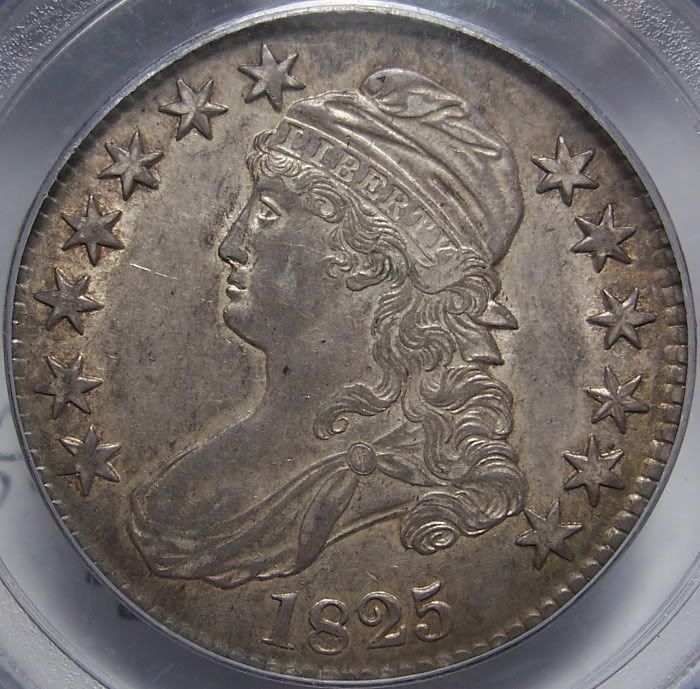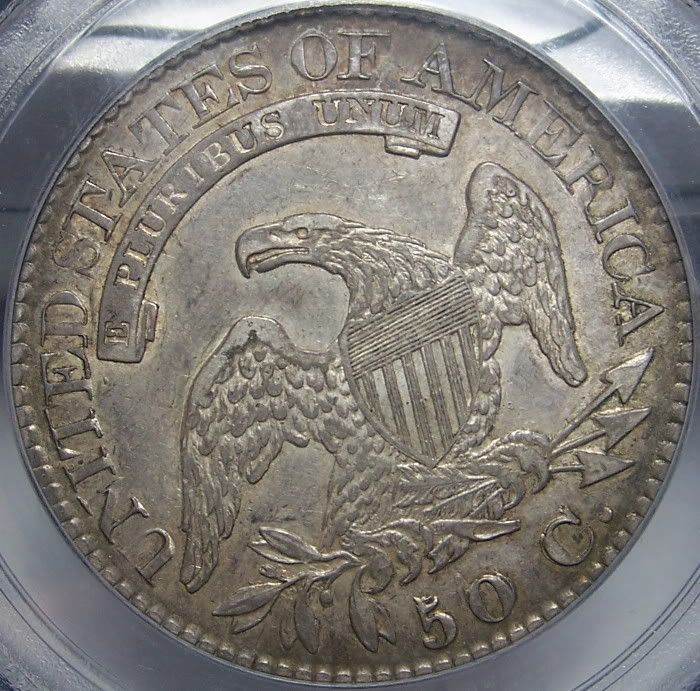NEWP 1825 O-111 Bustie
This is a scarce variety that has a double strike for the 50C on the Reverse. Here is a link to Edgar Souders' discussion of what Chief Engraver William Kneass was trying to accomplish: 1825 O-111
And here are pics of my new coin:


Note the 50C...
And here are pics of my new coin:


Note the 50C...
0
Comments
I like the coin.
You say the doubling of the 50c is strike doubling?
"If I say something in the woods and my wife isn't there to hear it.....am I still wrong?"
My Washington Quarter Registry set...in progress
In my book, Bust Half Fever, and earlier in the JRCS Journal, I wrote about a study that I did concerning metal flow, during the striking process, and the weak denomination area of 50 C. that resulted from it.
The conclusions from that study showed that the weak tops of the 5, 0 and middle to top of the C. was due to improper metal flow as this area is directly opposite to the highest portions of the cap on the other side of the half. Thus more metal naturally flowed into the larger deeper incuse cap area of the obverse die when the planchet was struck.
Over the years, Chief Engraver William Kneass did much work on this specific area constantly striving to get a better strike - and he eventually succeeded.
Here is an excerpt from that study:
"At this point, based on the observation of his successes, it would seem that Kneass had knowledge of metal flowage of opposing high areas. As he continued to experiment, both the old and “new” hubs were used to randomly make the WDs which explains why CBHs from 1826, 1827, etc., show minor differences to the portrait from one obverse to the next. Remember that throughout this ten-year span (1825-35) Kneass continued tweaking the design in his attempt to better standardize the strikes. So, he was on to the problem. The reverse denomination would come next. It was just a matter of how to deal with it.
While viewing the halves of most all the varieties of 1825, I noticed something I had not paid too much attention to prior to this study. It appears Kneass did an experiment with a particular reverse in 1825 (O-111). Here, he attempted to get a better strike in the denomination area by repunching the entire denomination lower on the Working Die reverse. I now believe this was his first experiment to see if the denomination would strike up better if placed lower towards the dentils."
BHNC member # 184!
http://www.busthalfaddict.com